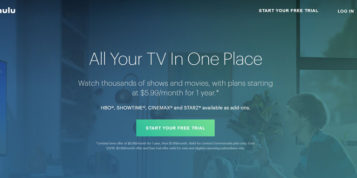The widespread adoption of smartphones, tablets and internet-enabled TV has led to an explosion in online video. As the popularity of these technologies continues to grow, the appetite for the medium will undoubtedly continue to increase; according to Cisco, by 2013, more than 90 per cent of all web-traffic will be video.
As one of the fastest-growing media forms, it’s not surprising that marketing teams are now recognising video as a key business communication tool. The medium has numerous advantages, not least the fact that it’s flexible, professional, cost-effective and, most importantly, engaging.
Online video for marketing: why now?
Already widely accepted in the B2C space, online video has come a long way from the amateur posts on YouTube back in 2005. Today’s high-quality online video has evolved to such an extent that it has enabled services such as Netflix to flourish.
And it’s not just consumers embracing online video; increasingly more B2B users have adopted Personalised Video Marketing (PVM) as a means with which to communicate directly with executives and they are recognising high-quality online video as a critical business tool.
Similarly, today’s web-savvy executives are realising the potential of video as a means to consume and circulate information and insight; according to Forbes Insights, as many as 75 per cent of executives are now not only watching online video at least once a week, but more than half are also forwarding on the videos they watch.
The growth in popularity and availability of mobile technologies has played a crucial role in both the accessibility and appeal of online video. Modern audiences are estimated to watch videos on up to four different devices per week, while the use of mobile devices has made it much easier to access and share content from anywhere in the world via a 3G dongle or Wi-Fi connection.
Faster broadband speeds have also dramatically improved the quality of the viewing experience, while advancements in live mobile streaming, for example, has helped ensure most audiences are not left struggling to download high-quality clips or having to watch slow, stuttering videos.
With modern business continuing to embrace the new era of online video and consumerised technology, Marshall McLuhan’s belief that ‘the medium is the message,’ has become more accurate than ever. Bringing together visual and audio elements, video guarantees maximum impact on the target audience in minimal time.
It’s believed that humans retain 50 per cent of what they see and hear as opposed to only 10 per cent of what is read [Edger Dale’s, ‘Cone of Experience’]. This is essentially great news for organisations when seeking to relay critical business information that resonates.
Video footage can take an executive on a journey in a matter of minutes and as a result, can help to develop a stronger business relationship. And while it isn’t a replacement for face-to-face selling, Personalised Video Marketing does make a highly effective partner, not least when used effectively to build and maintain communication throughout the sales life cycle.
Making PVM work
The next logical step for online video marketing is to make it more targeted. Rather than a ‘one message fits all’ approach, advanced marketing teams are now seeking to personalise the communication to specific customer needs and requirements.
In adopting this approach, marketers have the opportunity to not only drive brand and customer loyalty but also ensure that a strong channel of communication is maintained with each individual executive. And whereas in the past, this personalisation would have undoubtedly accounted for a huge chunk of the marketing budget, the availability of new hosted personalised video marketing solutions now means video can be easily edited and personalised.
Using cost-effective tools like vCreate, users can blend short video clips together into a seamless and highly relevant video presentation that exactly fits the interests or needs of the recipient. And its success is measurable. The video sender can quickly see who has viewed the video – and monitor how far into the viewing experience they got.
The fact that the solution is hosted makes it easier to share videos across a range of multi-site departments as all clips are in the cloud, in turn helping to ensure that corporate messaging and branding remains consistent across the whole business.






